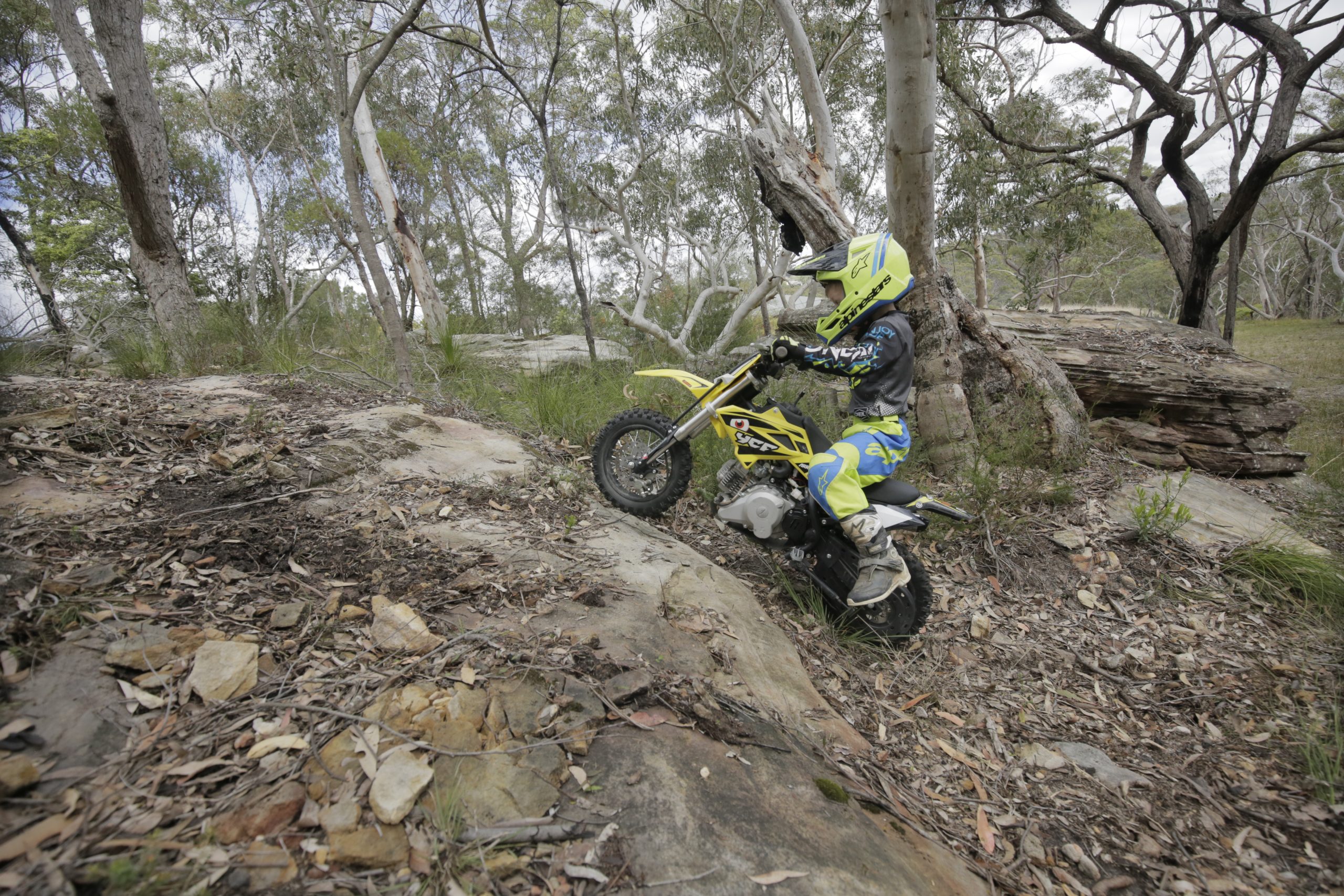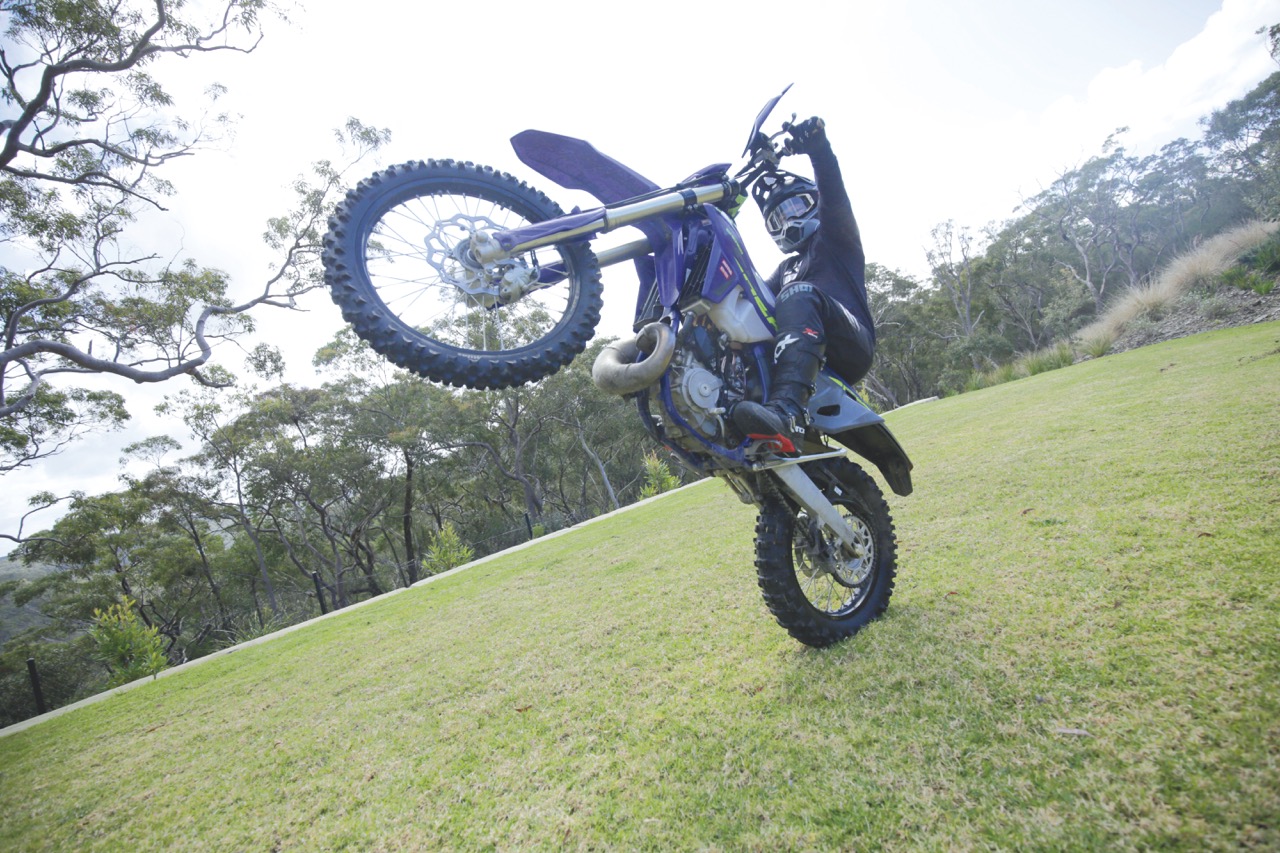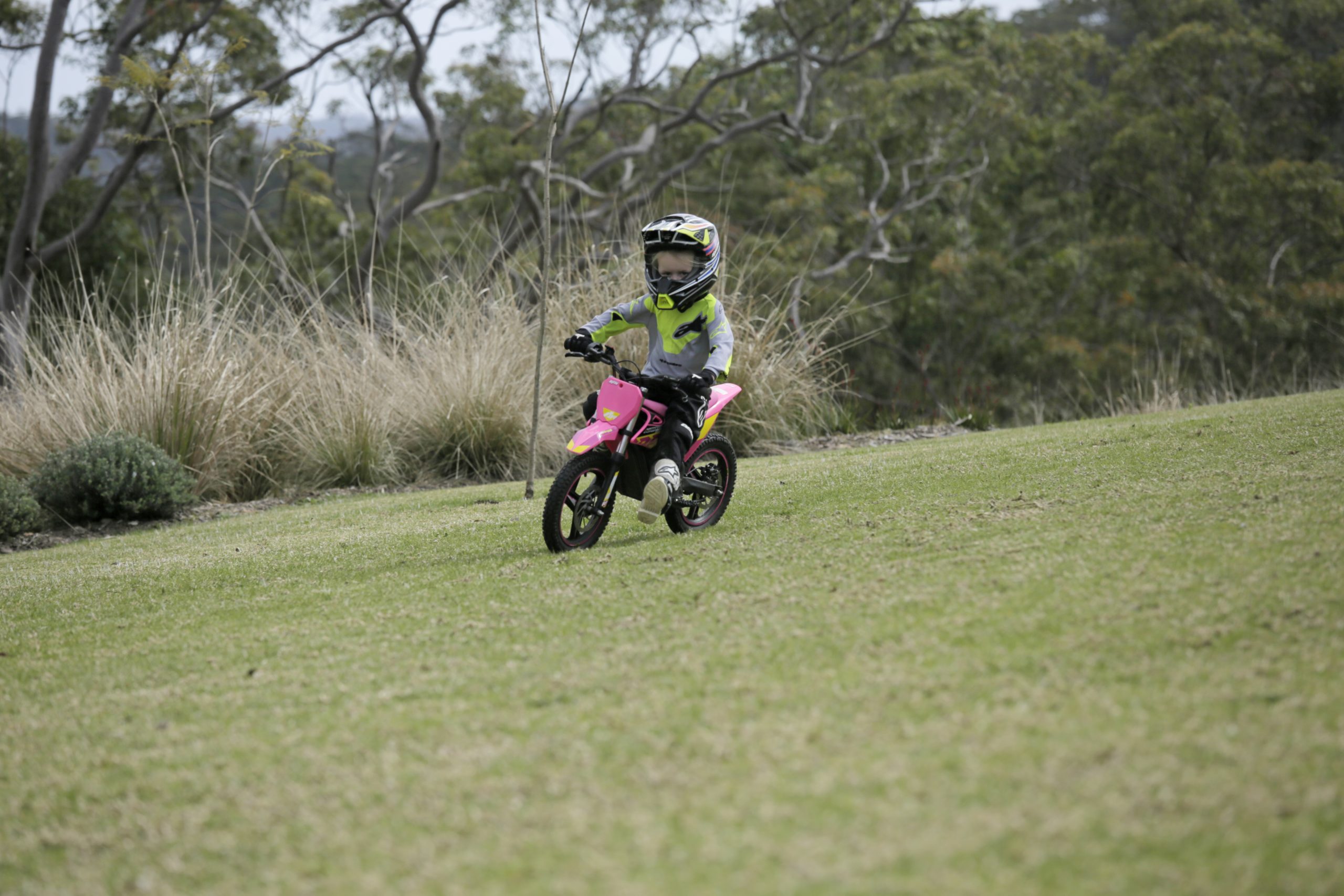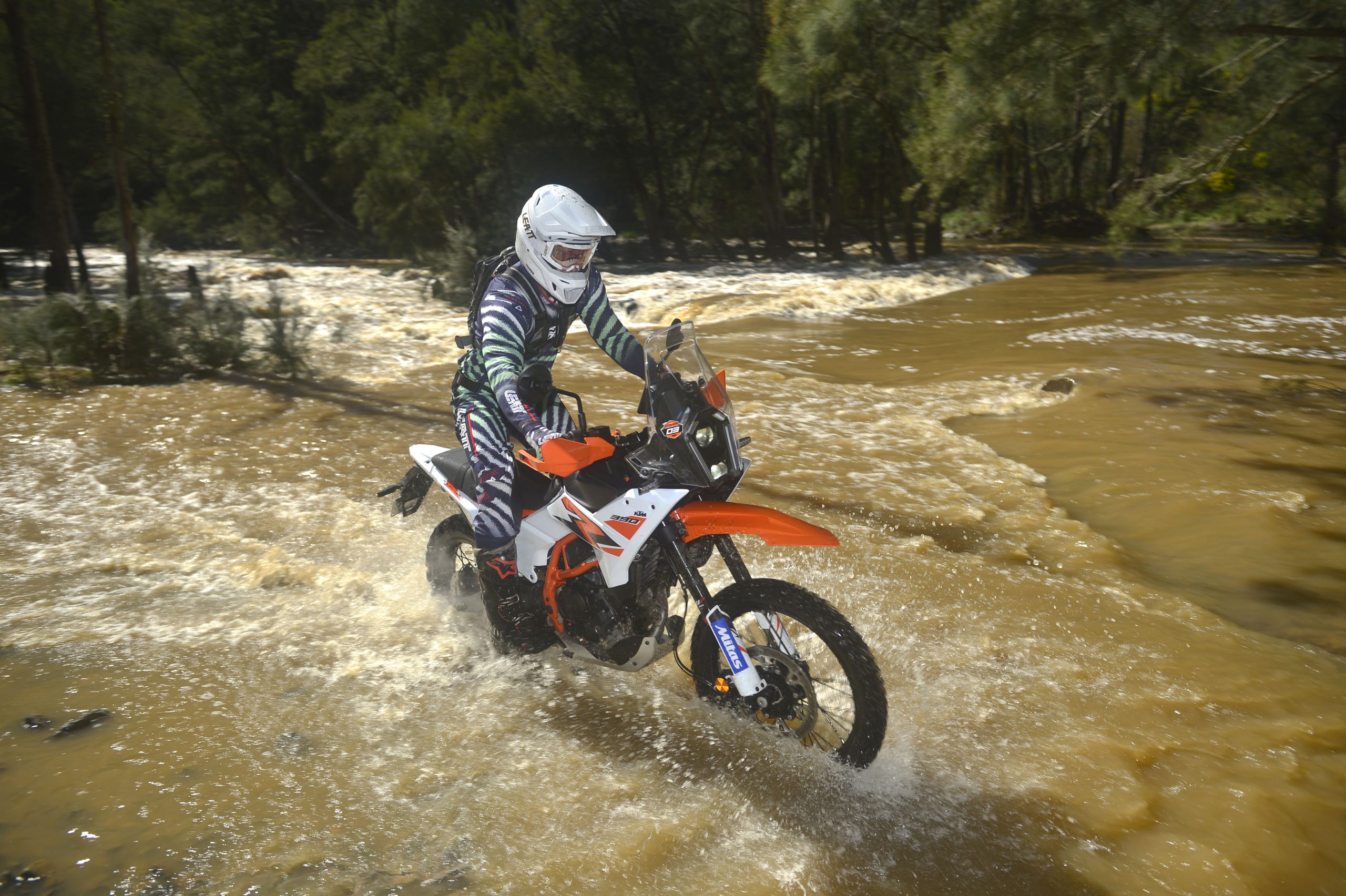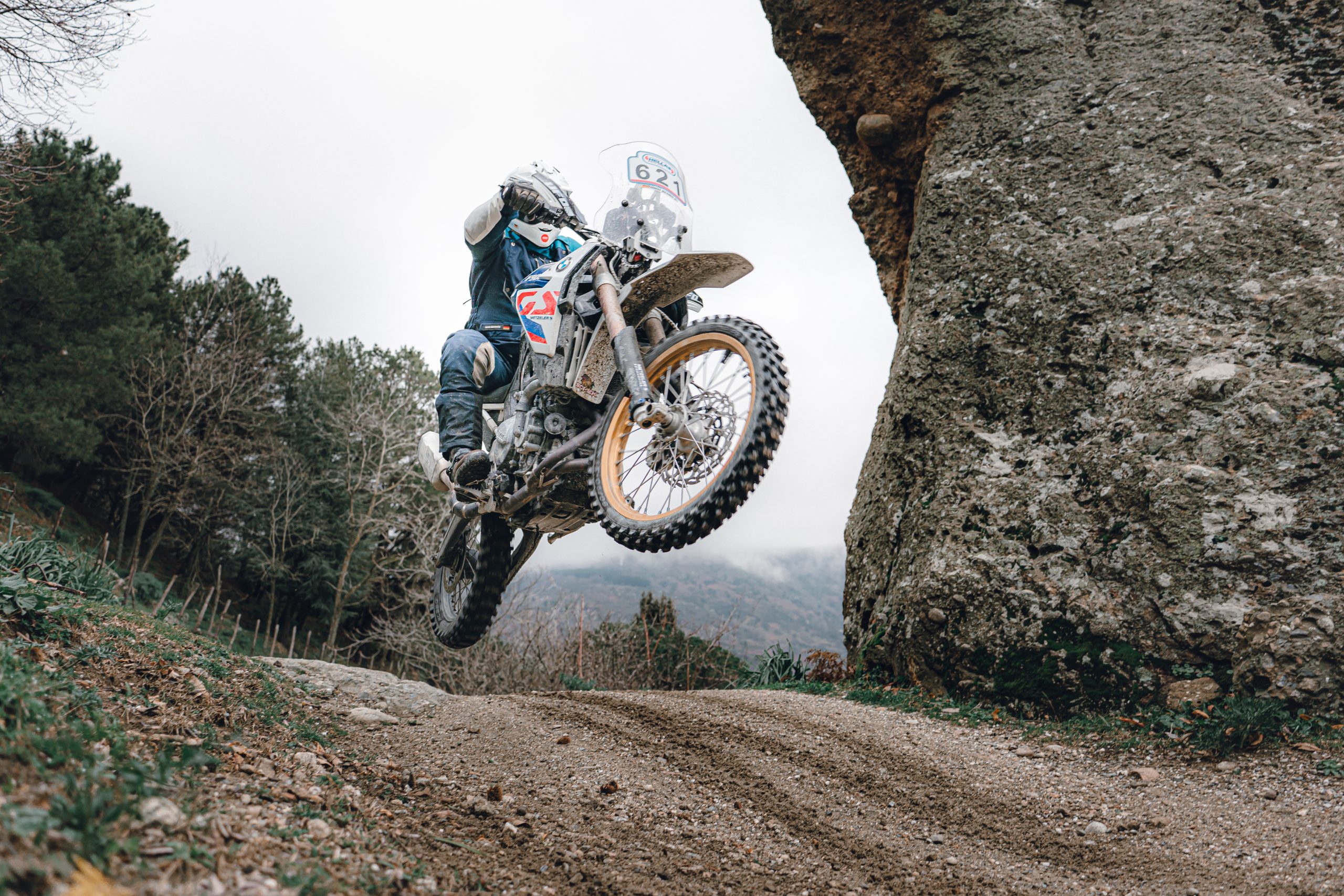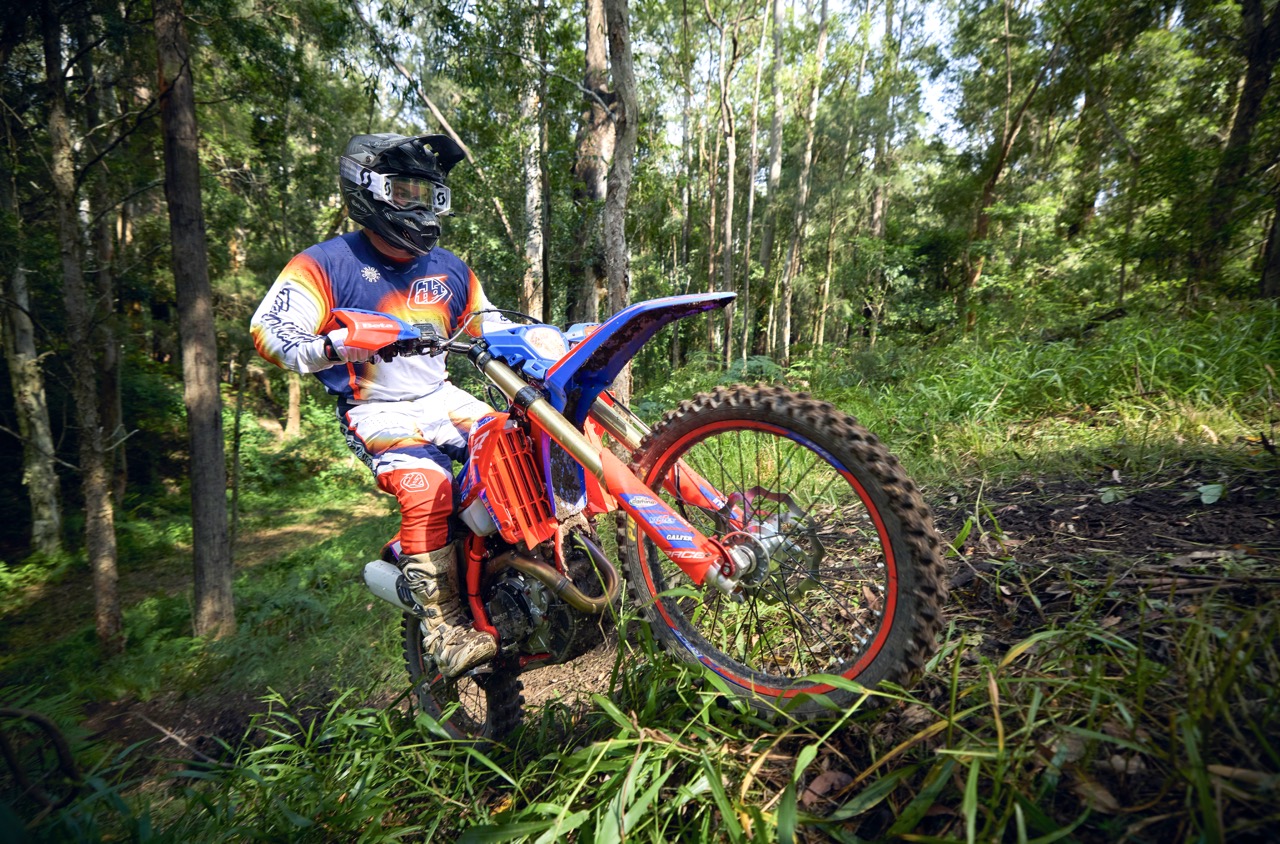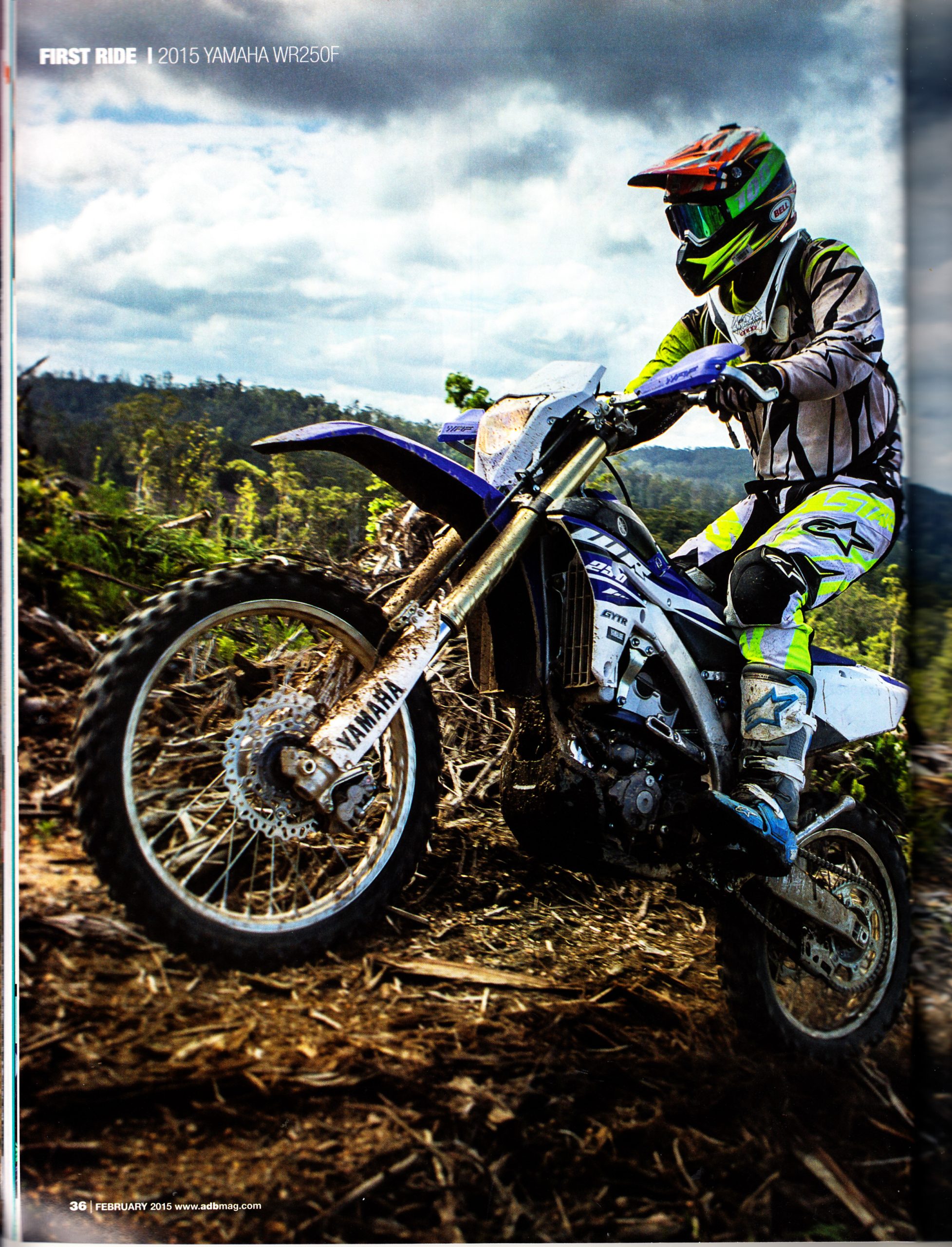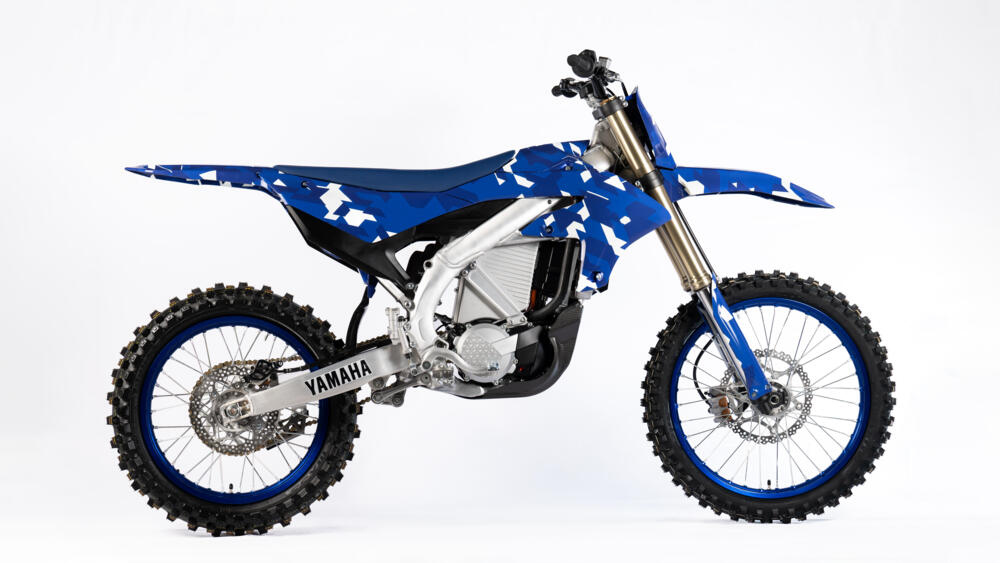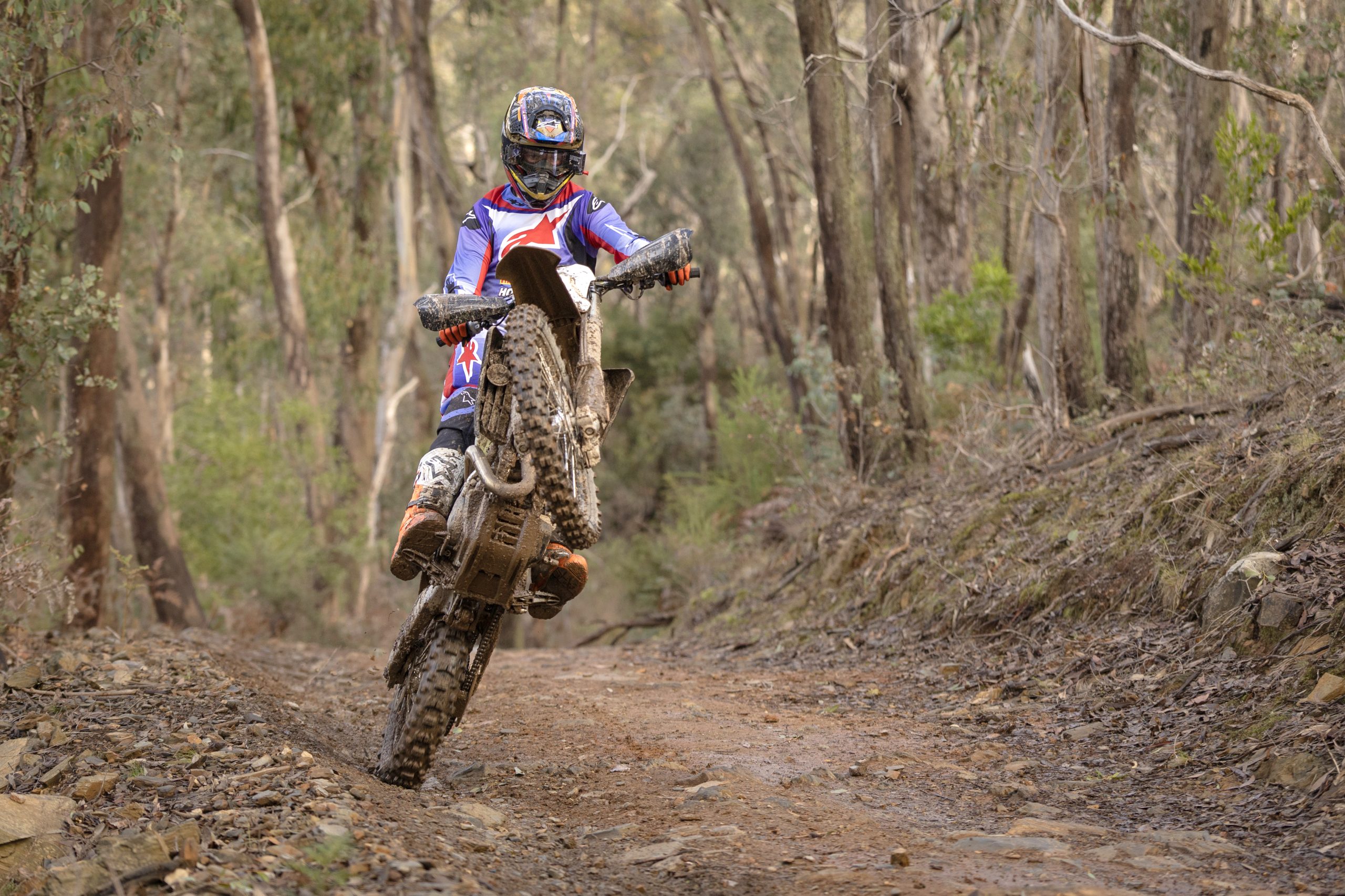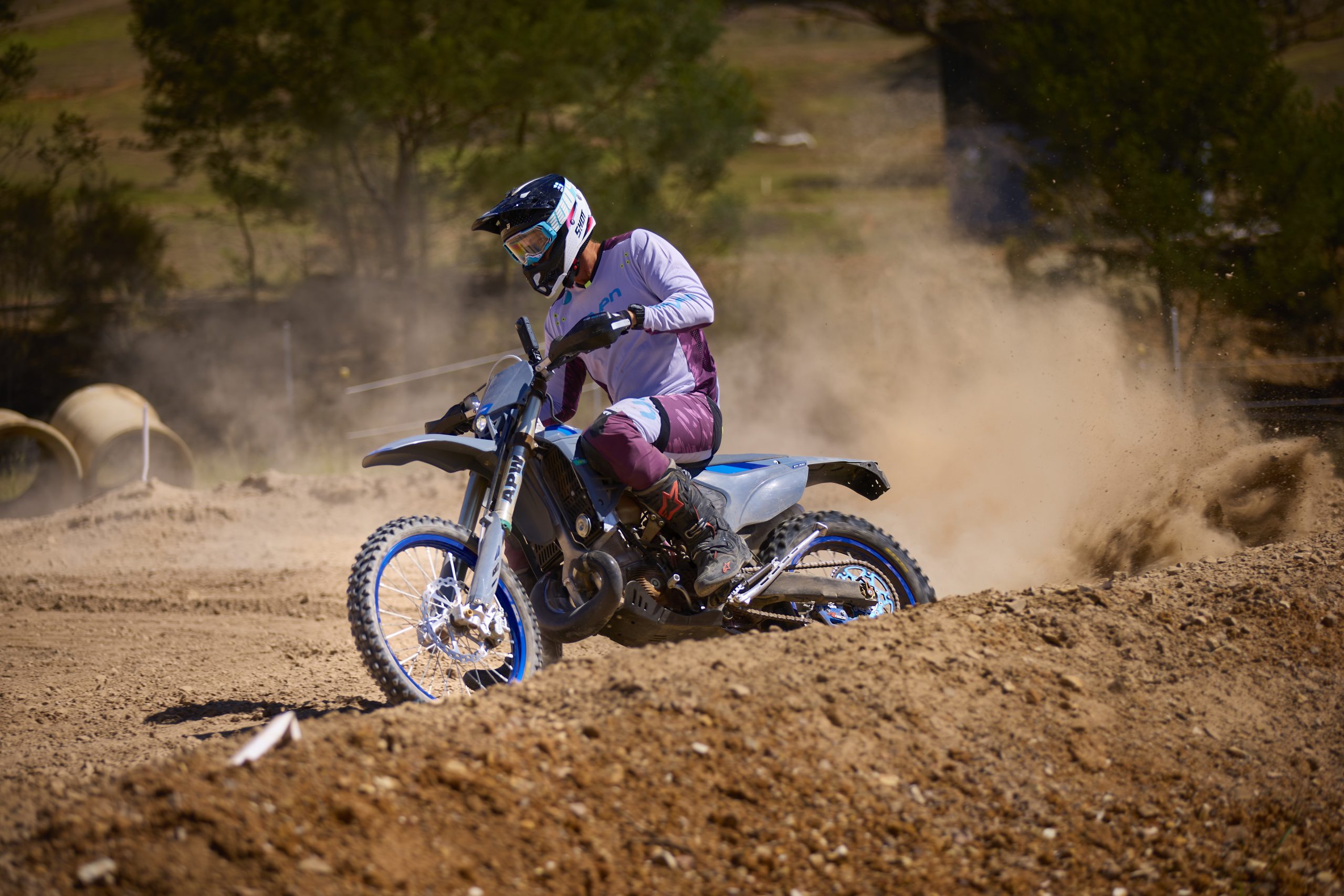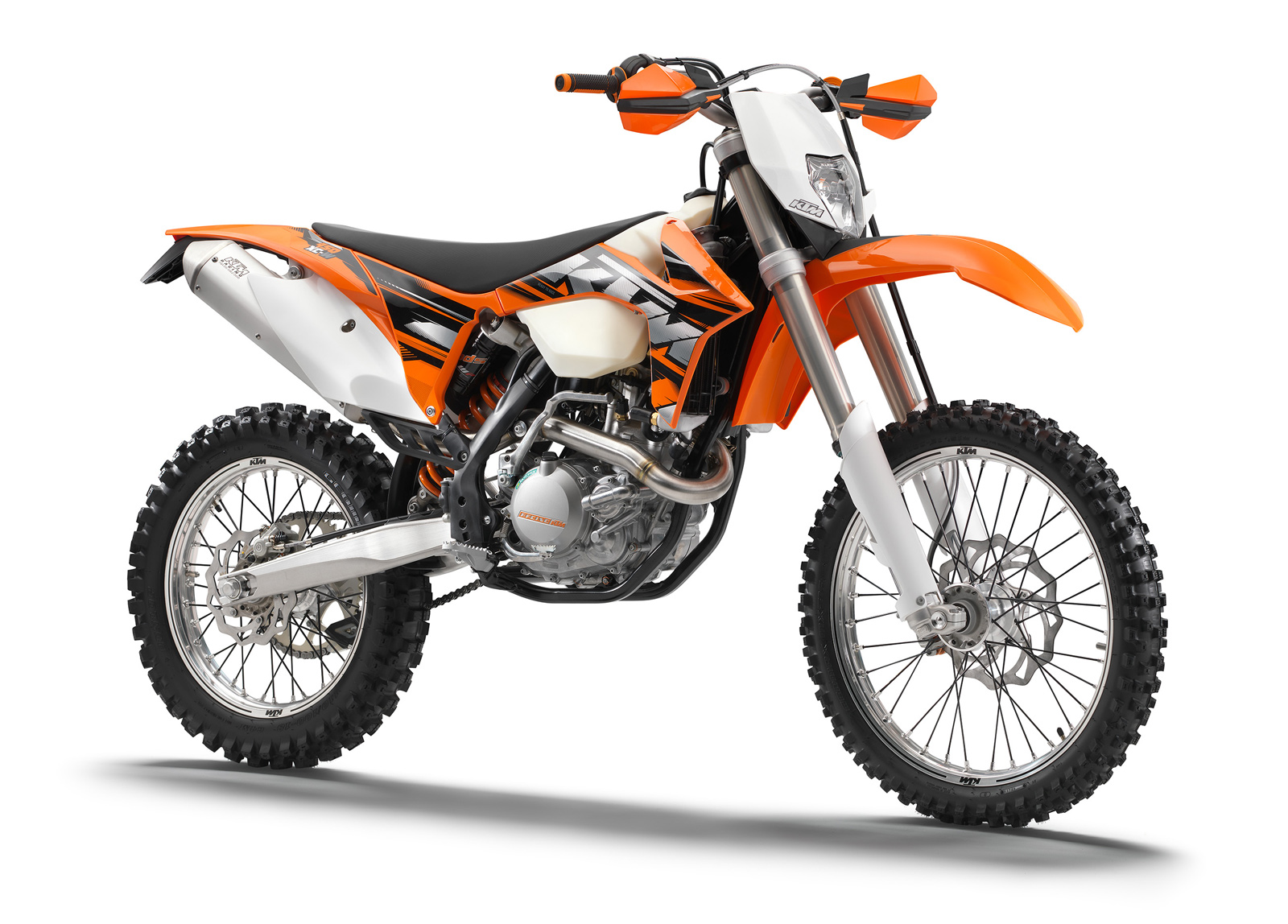The Yamaha YZ250F is a powerhouse. That much is undisputed. It claimed victory in our 250cc Motocross Shootout last issue, earning high marks for its explosive power, precision chassis, and industry-leading KYB suspension. But while it might be the perfect weapon in the hands of experienced racers, what happens when an average rider, stepping up to a 250cc four-stroke for the first time, gets on board? Would they be better off on something else? How does a YZ250F V CRF250R V KX250 go for kids stepping.
After our shootout in the previous issue, seasoned ADB tester Jeff Briggs said the Yamaha YZ250F is epic but while it worked for our professional-level testers, it may be too much bike for kids jumping on 250cc four-strokes for the first time. He suggested someone in that position may be better off on the Honda CRF250R or Kawasaki KX250 because their power was more docile and the handling a little more forgiving. Briggsy went as far as to say that he thinks a kid jumping on a 250F for the first time would actually be faster for longer on the CRF250R and KX250 than the YZ250F.
We put this theory to the test with Marcello Evans, a young rider transitioning from smaller bikes (a Kawasaki KX112), to find out whether the Yamaha YZ250F’s raw performance is actually a benefit—or if it’s too much of a good thing for a developing rider.
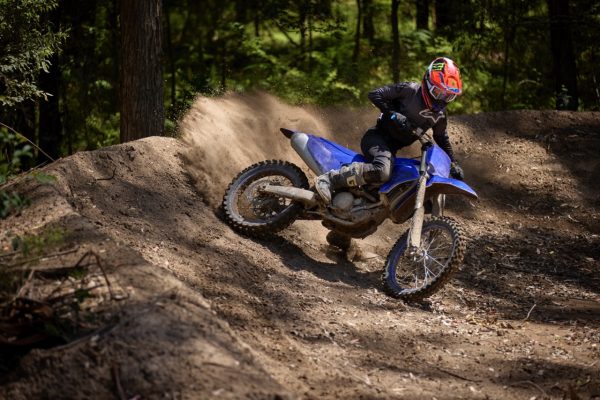
Young kids transitioning
Jumping up to a 250cc four-stroke from a 125cc two-stroke or smaller or a 250cc trail-oriented four-stroke is a significant step for any rider. The added power, weight, and chassis dynamics require a level of throttle control and body positioning that a smaller bike simply doesn’t demand. This is where Marcello’s insights became incredibly valuable. He rode the Yamaha YZ250F, the Honda CRF250R, and the Kawasaki KX250—two of the softer bikes in our original shootout—back-to-back to assess which machine suited him, a younger, lighter rider still developing his racecraft.
Marcello, like many transitioning riders, is at the point where he’s refining his technique. Learning throttle control, clutch modulation, and smooth cornering are all essential before raw horsepower becomes an asset rather than a liability.
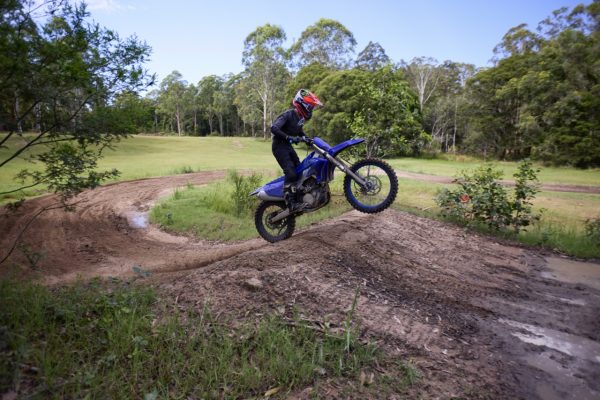
The Beast of the Class
It’s no secret that the Yamaha YZ250F packs a punch. Its liquid-cooled 250cc four-stroke engine churns out serious power, and the aggressive throttle response demands precision. Yamaha has improved the bottom-end torque over previous models, but as Marcello quickly discovered, that doesn’t necessarily mean it’s easier to ride.
“The Yamaha is my personal bike, but I just can’t control it,” he admitted. “It’s got too much power for me coming straight off a small bike. I reckon either the Honda or the Kawasaki is the best bike for stepping up.”
The issue wasn’t the outright speed of the Yamaha but rather how that power is delivered. The YZ250F revs quickly and hits hard, with a powerband that loves to be ridden high in the RPM range. For an experienced rider, this means blistering speed and aggressive corner exits. But for a developing rider, it can be overwhelming.
“In cornering, I just can’t be smooth on the throttle and roll it on. I’m always tempted to feather the clutch, and I end up losing power and losing time,” Marcello explained. “It’s just harder to ride. A lot harder.”
Lap times confirmed this. While Marcello initially felt fastest on the Yamaha—because he was working the clutch aggressively and riding high in the revs—the numbers told a different story. “At first, I thought I was fast on the Yamaha,” he said. “But after riding the Kawasaki and Honda, I came back and realized the Honda was definitely faster.”
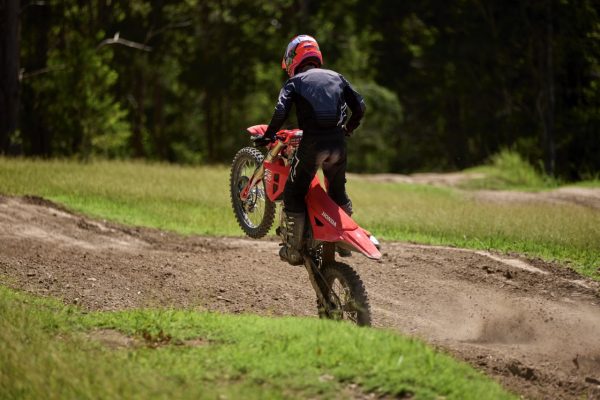
A More Forgiving Option
The Honda CRF250R has long been praised for its chassis balance and precision cornering. While it lacks the sheer top-end power of the Yamaha, it offers a smooth, predictable powerband that encourages proper technique. For a rider like Marcello, this meant he could focus on hitting his lines, rolling the throttle on smoothly, and carrying momentum through corners.
“The Honda was my favourite,” he said without hesitation. “It just had that enough power once you get high in the revs to cruise up the jumps. The chassis sticks to the ground, and it just feels like one of the best-handling bikes out there.”
This predictability made a huge difference in his riding. Unlike the Yamaha, which forced him to manage the clutch constantly, the Honda allowed him to focus on the fundamentals. It had enough power to be competitive, but it didn’t punish mistakes as harshly as the Yamaha did.
The CRF250R also offers excellent front-end feel, allowing Marcello to stay planted in ruts rather than fighting the bike through the exit. “On the Yamaha, I couldn’t stay in the rut,” he said. “The back wheel just slides out when the rut gets less steep, and it ruins the exit.”
For riders under 70kg who are still refining their throttle control and body positioning, the Honda CRF250R presents itself as an excellent stepping stone. It’s a bike that allows you to develop technique without the constant battle of taming an overpowered machine.
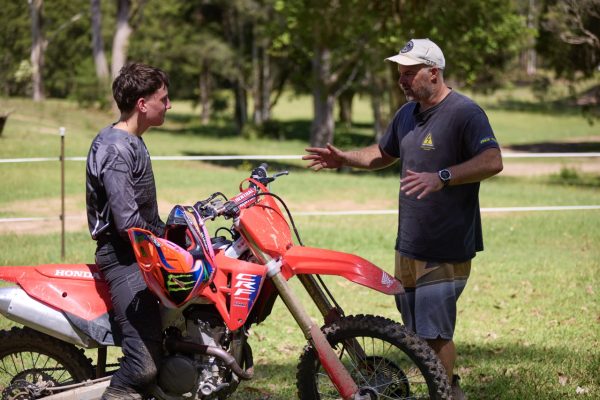
The Middle Ground?
If the Yamaha is the aggressive powerhouse and the Honda is the predictable handler, the Kawasaki KX250 finds itself somewhere in between.
Kawasaki’s 250cc four-stroke has always been a smooth, easy-to-ride bike with a user-friendly powerband. However, compared to the Honda and Yamaha, it does lack some punch off the bottom, which Marcello noticed.
“The Kawasaki is a very good bike, but it just doesn’t have enough power to be competitive in a straight line with the YZ250F,” he said. “Even though you could adjust that with a pipe, it’s just not quite there.”
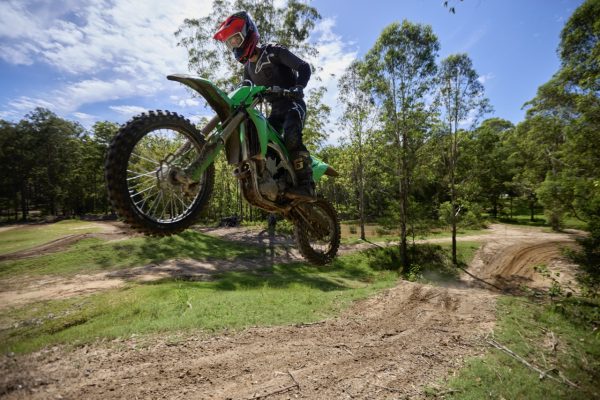
However, for a young rider still learning the ropes, this might actually be a good thing. The KX250 allows for ultra-smooth cornering and rewards momentum riding. It may not have the raw torque of the Yamaha, but it also doesn’t punish riders as severely for mistakes.
“The Kawasaki was kind of hard to make it over jumps at first because I had to try a little harder to ride fast coming into the take-off ramps,” Marcello noted. “But at the same time, I wasn’t riding it at full pace. If I pushed it harder, I could see it working well.”
For riders under 70kg who aren’t looking for the most aggressive bike in the class, the Kawasaki presents a compelling case. It’s the most affordable of the three, has a smooth powerband, and remains one of the easiest bikes to handle in ruts and corners. While it may not be as race-ready as the Honda or as dominant as the Yamaha, it’s a solid choice for those who prioritize control over raw speed.
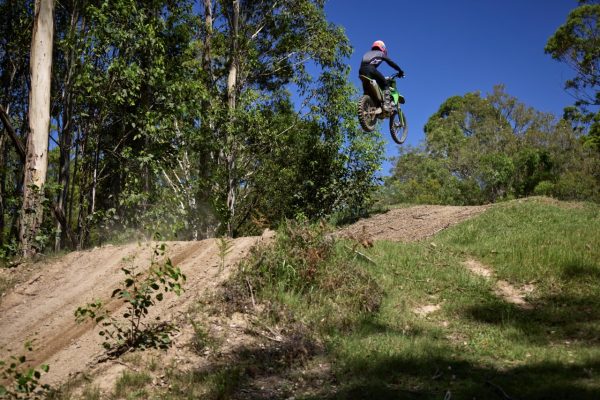
Which 250cc Bike is Best for a Young Rider?
So, which bike is best for a young rider stepping up to a 250cc four-stroke? If outright performance is the goal, the Yamaha YZ250F remains the class leader. However, for riders transitioning from a smaller bike, it may actually be too much. The aggressive power delivery, explosive throttle response, and high-revving nature make it a handful unless you have the skill to control it.
For those who want a balance of power and control, the Honda CRF250R is a fantastic option. It has enough power to be competitive but delivers it in a way that allows riders to focus on technique rather than sheer survival. Its excellent handling and front-end feel make it an intuitive bike to ride, especially for those under 70kg who are still perfecting their skills.
Meanwhile, the Kawasaki KX250 remains a great option for those who want a more forgiving bike. While it may lack some bottom-end punch, it rewards smooth, momentum-based riding and is the easiest of the three to control through corners. It’s also the most affordable, making it an attractive choice for riders looking for value without sacrificing performance.
Ultimately, the best bike depends on the rider. If you’re stepping up to a 250cc for the first time, don’t just go for the bike with the most power or the one that won our shootout—go for the one that allows you to ride your best. For Marcello, that bike was the Honda. For someone else, it might be the Kawasaki. And for those ready to handle a beast, the Yamaha awaits. Choose wisely.
